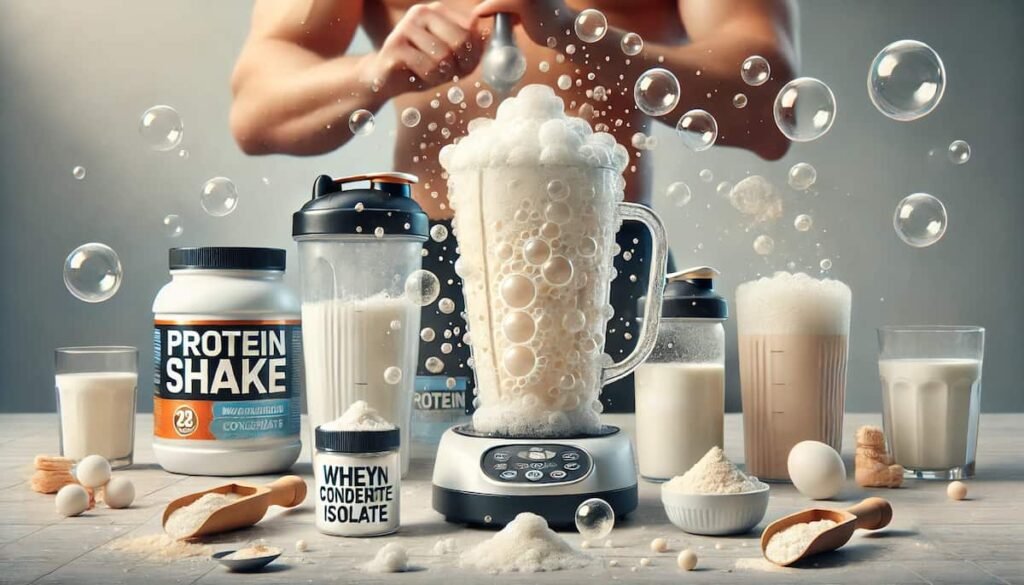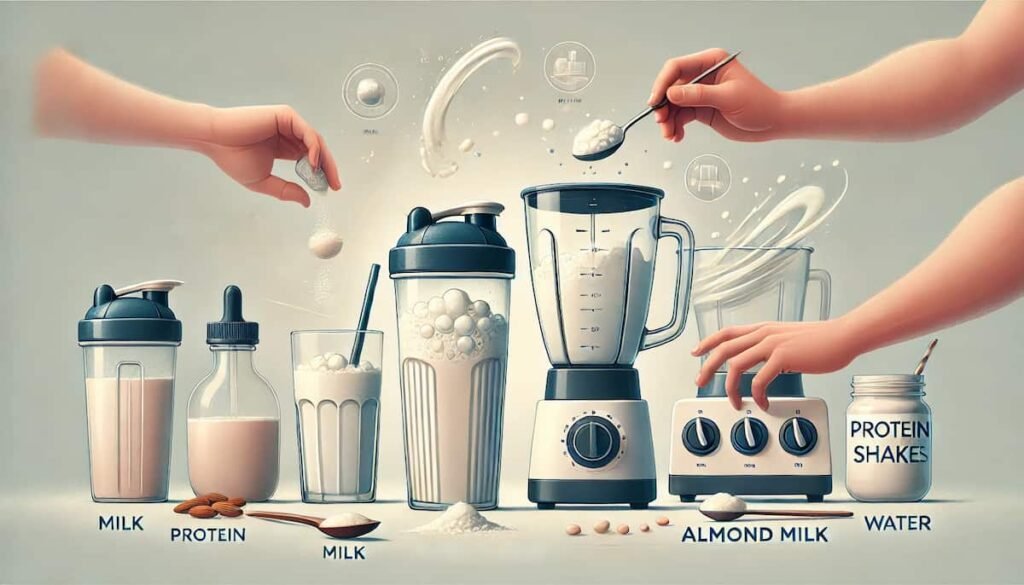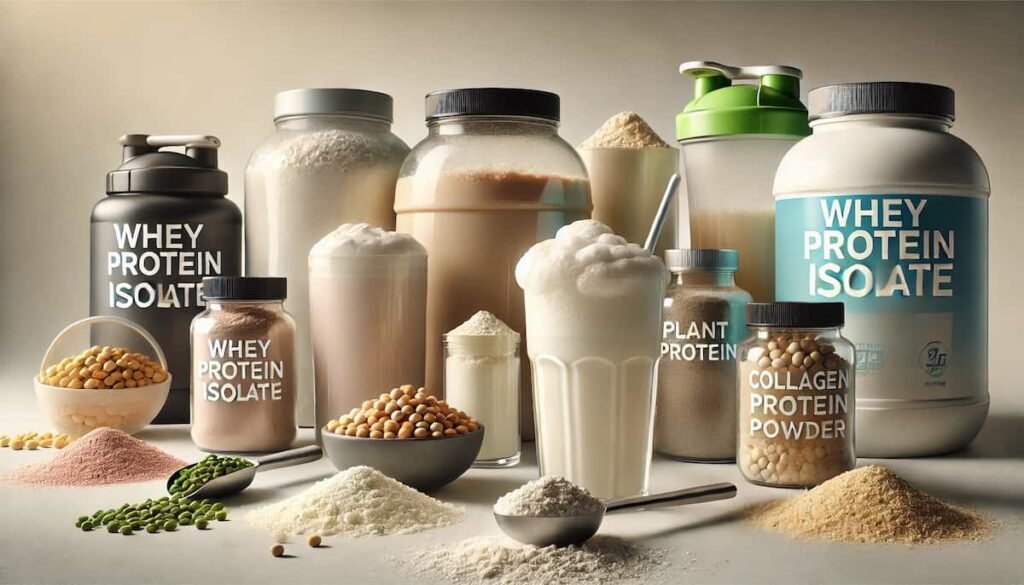If you’ve ever made a protein shake and noticed a thick layer of foam sitting on top, you’re not alone. It’s a common issue for many people, but you might be wondering: “Why is my protein shake foamy?” Is it a sign of a good shake or something to avoid?
In this post, I’ll walk you through why your protein shake gets foamy, whether it’s something to worry about, and how to prevent it if you prefer a smoother drink.
What Causes Foam in Protein Shakes?
Foam in protein shakes is typically the result of how you mix your ingredients. When air is incorporated into the liquid during the shaking or blending process, it creates bubbles that turn into foam.

The amount of foam also depends on the type of protein powder you’re using and how it interacts with the liquid. Here are a few factors that can cause foam:
- High-speed blending: Blenders, especially powerful ones, trap a lot of air during mixing, which leads to foam.
- Whey protein concentrate or isolate: These types of protein powders are more likely to foam due to their consistency and composition.
- Shaking too vigorously: While shaking helps mix the powder, it also creates more air bubbles, resulting in foam.
- Additives or stabilizers: Some protein powders contain emulsifiers and thickeners that can affect foam production.
- Type of liquid: Mixing protein powder with water can result in more foam than using thicker liquids like milk.
The good news is, foam isn’t harmful. But if you prefer your shake smooth, I’ll share some tips later on to reduce the foam.
Is Foamy Protein Shake Good or Bad?
The foam itself isn’t necessarily good or bad—it all comes down to personal preference. Some people don’t mind the foam, while others find it affects the texture of the shake. Check out our review for Dr. Kellyann Keto Bone Broth Protein Powder.

But there are a couple of things you should know:
- Foam doesn’t reduce nutritional value: The presence of foam doesn’t mean your protein shake has lost any of its nutrients. You’re still getting the same amount of protein, vitamins, and minerals whether there’s foam or not.
- Texture preferences: Foam can make the shake feel lighter and frothier, which some people enjoy. Others may find it makes the shake feel too airy or dilute.
- Mixing efficiency: Too much foam might indicate that your shake wasn’t mixed well enough, meaning there could be clumps of powder at the bottom of your shaker or blender. Ensuring smooth mixing is essential to fully dissolve the powder.
So, whether foam is good or bad is really up to you. If you don’t mind it, then there’s no harm. If you’d rather have a smooth shake, I’ll show you some easy fixes below.
How to Reduce Foam in Your Protein Shake

If you’d rather skip the foam and enjoy a silky-smooth shake, here are a few tips to help:
- Use a shaker bottle with a mixing ball: Instead of blending, try shaking your protein powder in a bottle with a mixing ball. It helps mix the ingredients without trapping as much air.
- Add powder slowly: When blending, add the powder gradually instead of all at once. This reduces the chances of air getting trapped and creating foam.
- Use a spoon to mix: If you’re not in a hurry, mix your shake with a spoon for a smoother, foam-free drink. It may take longer, but it’s worth it if you hate foam.
- Switch to a different liquid: Using milk or plant-based alternatives like almond milk can reduce foam compared to water. Thicker liquids don’t create as much foam.
- Blend on a lower speed: If you must use a blender, start on a low speed to minimize air incorporation. You can also let the shake sit for a minute after blending to allow the foam to settle.
- Try different protein powders: Some brands and types of protein powders are less prone to foaming. If foam is a recurring issue, consider switching to a powder with fewer additives or emulsifiers.
| Tip | Description | Effectiveness |
|---|---|---|
| Use a shaker bottle | Reduces foam by limiting air intake during mixing | High |
| Add powder slowly | Minimizes air bubbles during blending | Medium |
| Use milk instead of water | Thicker liquids prevent excessive foam | High |
| Mix with a spoon | Eliminates foam but takes more effort | Medium |
| Lower blender speed | Reduces trapped air while blending | Medium |
| Switch protein powders | Some powders produce less foam | High |
Why Is My Protein Shake Foamy?
Protein shakes can get foamy due to the interaction between the powder, liquid, and the mixing process. Whey protein, in particular, tends to foam more than other types. High-speed blending and vigorous shaking can trap air, leading to a frothy layer.
While the foam won’t affect the shake’s nutrition, it might alter the texture, which some people find unappealing. However, with a few tweaks to your mixing method, you can reduce or even eliminate the foam for a smoother drink.
Best Types of Protein Powders for Less Foam
If foam is a deal-breaker for you, it might be worth switching up the type of protein powder you’re using.

Here’s a quick look at which powders are more or less likely to foam:
- Whey Protein Isolate: Foams more due to its light consistency.
- Casein Protein: Tends to create a thicker texture with less foam.
- Plant-Based Proteins (Pea, Hemp): Generally foam less, though some brands may differ.
- Collagen Protein: Minimal foaming, as it dissolves quickly and smoothly.
Conclusion
Foam in your protein shake isn’t a sign that anything is wrong—it’s just a natural result of how the shake is mixed. Whether you like the light, frothy texture or prefer a smoother drink, there are easy ways to control the foam.
From using a shaker bottle to switching up your protein powder, you can enjoy your shake just the way you like it. And remember, foam or no foam, you’re still getting all the nutrition you need from your protein shake.
Related Posts:
FAQs
Does foam in a protein shake mean it’s bad?
No, foam doesn’t mean anything is wrong with your protein shake. It’s simply the result of air getting trapped during mixing and won’t affect the nutrition or quality of the shake.
How do I stop my protein shake from being foamy?
You can reduce foam by using a shaker bottle instead of a blender, adding the powder slowly, or switching to thicker liquids like milk.
Which protein powders foam the least?
Casein protein and collagen protein powders tend to foam less than whey protein. Plant-based powders can also be a good option if foam bothers you.
Can I still drink my shake if it’s foamy?
Absolutely! Foam doesn’t affect the nutritional value of your shake, so it’s perfectly safe to drink. If you don’t like the texture, let the foam settle or stir it out with a spoon.
Why does my protein shake foam more with water?
Water is less dense than milk or plant-based alternatives, which makes it easier for air to get trapped and create foam during mixing.
How long should I blend a protein shake?
If you’re using a blender, blend your shake for 20-30 seconds on a low speed to avoid excess foam. Let it sit for a minute if foam forms after blending.